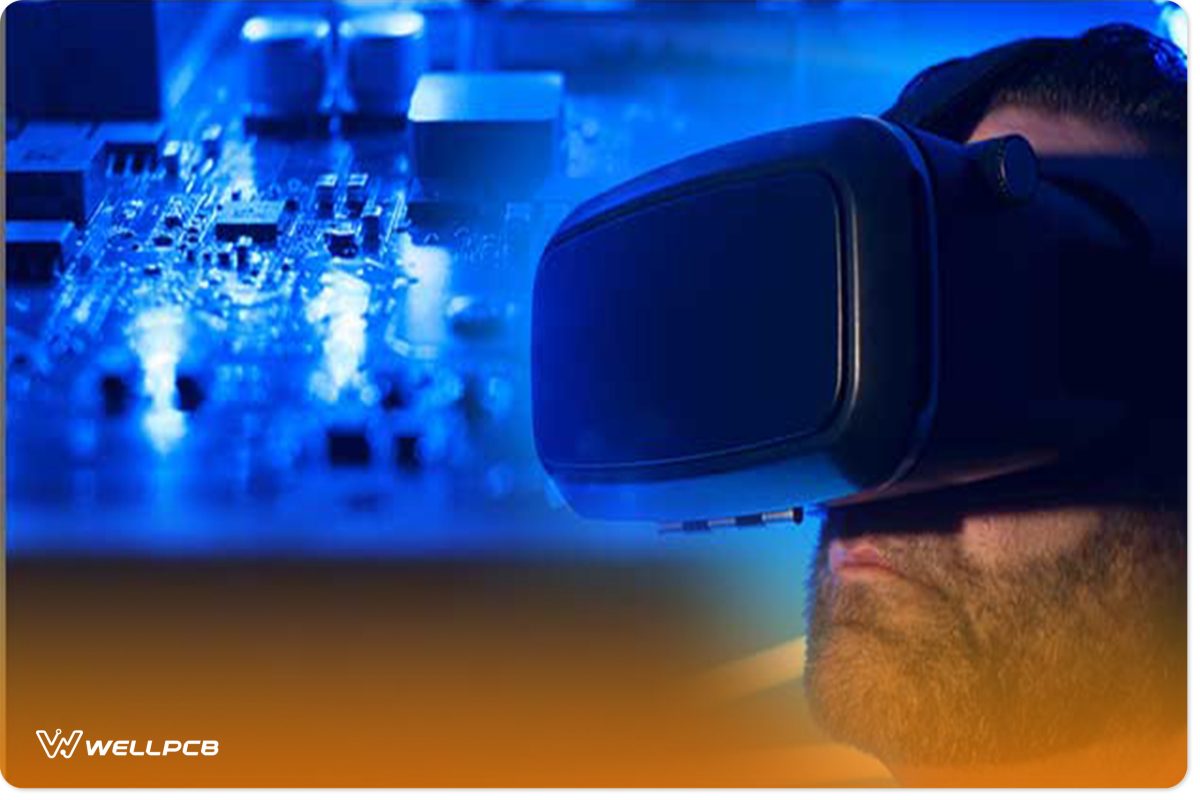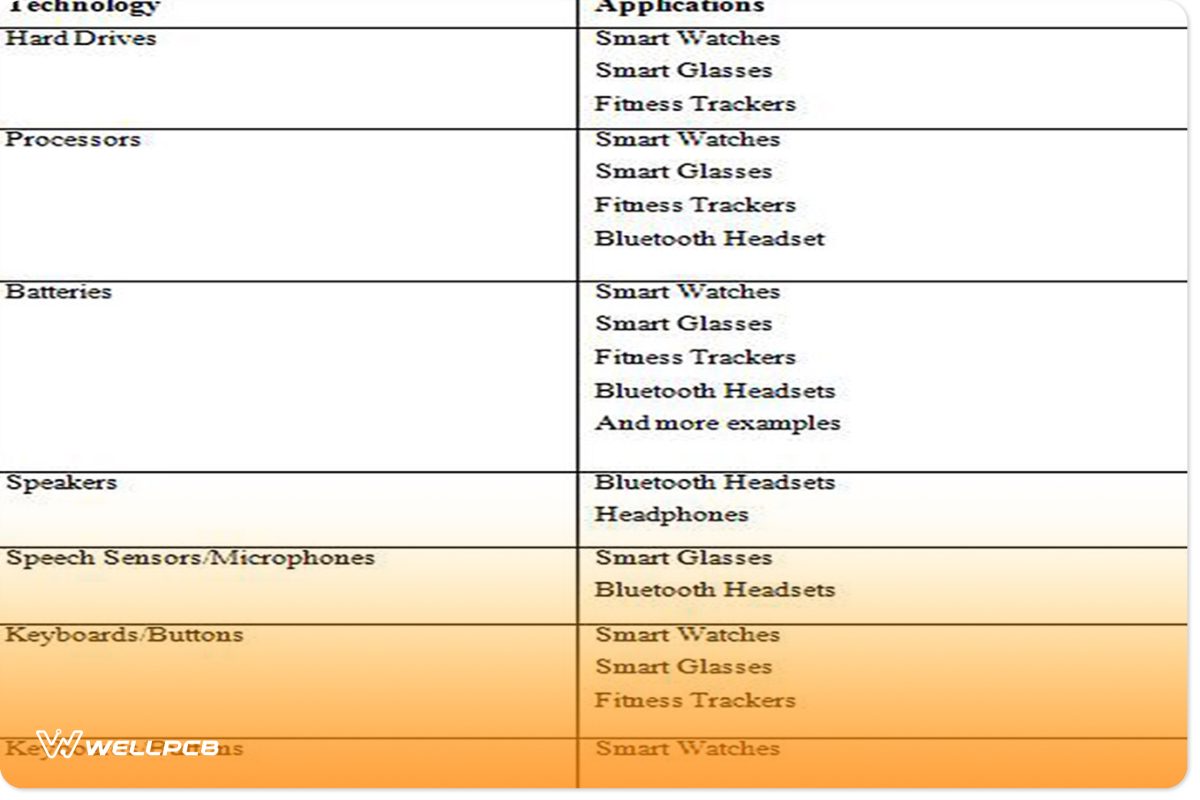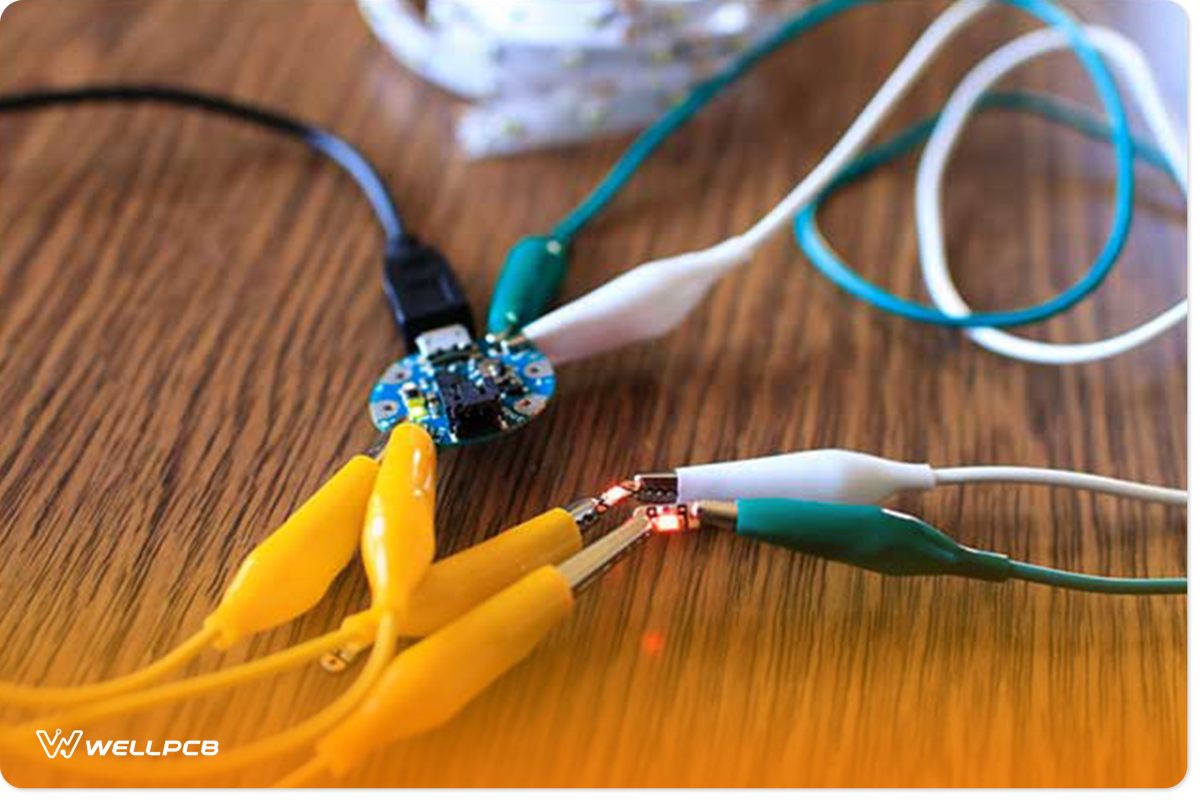Contents
What is Wearable Technology?

Wearable technology can be broadly described as a category of devices that you can wear, often used to track information related to health and fitness.
In essence, wearable technology includes electronic devices embedded into items such as smartwatches, fitness trackers, smart eyewear, and even smart clothing. These devices are used daily to gather and monitor data, enhancing our understanding of health metrics and fitness goals.
Since the advent of smartphones, wearable technology has emerged as the next big trend in the industry. The integration of advanced PCB solutions, and rigid-flex designs in particular, allows for greater flexibility and durability, making it easier to incorporate electronics into compact, wearable formats.
The technology in wearable electronics
The changes in electronics started with size improvements, and these improvements are sponsored by battery technology, power, memory, portability, and other technologies. “Shrinkage of computers, displays, and other gear have made ‘rigs’ worn today by wearable computer pioneers smaller and more comfortable than earlier versions.” (Weiss, 1999). Over time, many companies started developing chips that could have billions of transistors on them, being the essential elements in the computing world.
The next feat was the sensors that are used. These sensors can respond to changes in some environment variables with some appropriate and accurate output. These variables range from audio (speech and music) to visual (light and color) to mechanical (buttons and keyboards).
Different types of Wearable Electronics are available in the market today!
Wearable electronics are becoming more popular day after day in the consumer market, covering areas of fitness and health tech, communication, and offering innovations we could only imagine. Below is a table that contains a variety of wearable electronics and the technology behind them.

Smart Watches: this is not just about telling the time; it provides notifications for users when connecting it to their smartphones, such as calls, messages, social media updates, emails, etc.
Fitness Tracker: The fitness tracker helps monitor the heart rate continuously and keeps the number of steps the user takes within a range of time. This device now uses the information collected to determine the number of calories burned by the user after an exercise.
Smart Clothing: in a bid to look more fashionable and highly presentable, intelligent electronic devices are incorporated into clothing.
Smart Jewelry: nowadays, we see manufacturers make smartwatches as jewelry for women, and they notify the user of calls, texts, or emails when the user’s phone is out of reach.
Sport Watches: these watches can be specially targeted towards athletes involved in sports such as running, swimming, cycling, etc. These watches also come with a GPS tracker and offer information on the athlete’s speed rate, heart rate, etc.
Implantable electronics: this is another level of technology where there is the surgical implantation of these wearable electronics under the human skin. Clinical personnel suggest these implantable electronics for medical implications, such as tracking insulin levels and contraception.
Head-Mounted Display: When you wear these devices, it brings you into the world of virtual reality.
The Scope of Wearable Technology
The product and consumer range of wearable technology is getting extremely wide as more industries, both public and private sectors, are investing more in technological innovations as a tool to enhance their field of work. Some of the various aspects that were pulled in recent times into the revolution include the following:• Telecommunication
- Robotics
- Fashion
- Healthcare
- Academic
- Entertainment
- Agriculture
- Finance
- Athletics
- Consumer
- Military
- Retail
As a result of the vast development in technology, especially in the computer and electrical engineering fields, wearable electronics is becoming a widespread and rapidly growing industry. The market value is believed to reach $70 billion over the subsequent ten years. It is also apparent that as electronics and computing become more advanced, their wearable counterparts will follow the same thread. There is a high tendency that, in the long run, the industry would start incorporating wearable electronics into the consumer’s everyday life. Consequently, there will be a high need for more companies to invest in.
Key Challenges Facing PCB Designs for Wearable Electronics

It is no secret that smart and cost-efficient circuit board designs are the key to wearable electronics’ success. However, designing PCBs for wearable electronics is not as easy as it appears to be. There are several things to be considered, which may not necessarily apply to standard electronics. Here, we bring to you some of the challenges faced in designing PCBs for wearable electronics. They can either be body-based or technical challenges.
Size and Shape
Of course, as you probably know, one principal difference between usual electronics and wearable electronics is the size. In a way, you have to minimize the size and produce the same functionality at the same time, which is not an easy piece of work. Also, along with the size, you have to keep the shape well-suited for the intended purpose.
Board Material
You do not expect a significant use of traditional materials in building a PCB for a wearable electronic; you have to use sophisticated and seemingly subtle elements such as fabric, mesh, and rigid-flex materials. Consequently, this requires a professional or someone who has a good knowledge of the same to operate them and use them.
Power
A good number of wearable electronics use battery cells as a source of power. Due to the size of the electronic device, the battery has to be smaller, too, and the goal is to make the consumption of power as low as possible, delivering the same efficiency simultaneously.
Connectivity
There has been an apparent increase in demand for modules that provide increased connectivity (such as Bluetooth, infrared, Wi-Fi, etc.) for electronic devices over the last few decades. And getting a space for these modules on the board might be a bit of a challenge in wearable electronics.
Antenna design
The human body can efficiently dissipate electrical energy, so designing antennas for wearable electronics can be complicated in proximity.
Humidity
It is another vital factor to consider as the human body tends to give off a moisture level that can damage your wearable electronics if you do not take some specific measures.
The Impacts of Wearable Electronics in the Society

Let’s check out some statistics first:
- The valuation of wearable electronics jumped from $6.3 Million in 2010 to $5.1 Billion in 2014, and it was estimated to surpass $12.6 Billion by 2018, meaning a lot more people are going for it.
- The report says 71% of Americans admit that wearable technology has improved their health.
- According to Rackspace, 54% of Americans and 46% of Brits say wearable technology has boosted their self-confidence.
- Since 2009, wearable tech startups have been getting up to $500 Million from investors seeing the impact of these wearable electronics globally. (source: Shieber)
A study was targeted at the latest push to use wearable electronics to improve and enhance exercise. Different sensors were attached to a set of individual runners. They observed that data obtained and recorded over time would help runners in the study and improve their ability to run, as it will give them a chance to work on their weaknesses or areas they are weak.
Also, in medical applications, wearable electronics have been widely encouraged as this could be a means of monitoring and managing patients’ health conditions. The use of a smartwatch connected to a heart monitor could help the doctor have a constant monitoring procedure on the patient’s health and be aware of any pressing emergency.
Another useful application of wearable electronics today is the constant and easy access to information and computing technology. The twenty-first century has globally been called the information age, where you have to stay connected to the global world to be informed and get to know the things around you. So having information at the fingertips of consumers is the fundamental goal for many wearable tech companies, either small or big.
The pros and cons of Wearable Technology
Pros
• Hands-free experience
allow users to make calls or messages while keeping their hands free. For instance, you can be driving and calling at the same time. And it gives visual assistance, too.
• Convenience and Portability
allow instant access to information, and users can carry them around with a lot of accessible information.
• Greater Accuracy
In the medical sector, wearable electronics have been found to provide accurate data on the patient’s health as they monitor and record every bit of detail. A more specific determination of symptoms, side effects, and several others is possible through the use of these.
• Improved Efficiency
Studies have shown that wearable electronics have been of help to increase personnel’s efficiency, such as the physician diagnosing a patient.
• Improved Productivity
Stemming from enhanced efficiency, it helps wearable electronics streamline workflows and increase the level of productivity.
• Personalized Information
Several wearable electronics help keep and provide valuable information that you may need at any point in time.
• Improved decision making
also help in decision-making as they help produce facts and figures regarding health and other aspects of life.
Cons
• Security
Electronic records raise potential privacy concerns, which may lead to unauthorized access to the stored information.
• App reliability
Reliability may be a source of concern as there is still more improvement to be done when it comes to wearable electronic devices.
• Battery life
As discussed above, this is one of the most crucial challenges with wearable technologies. Most wearable electronics work with smartphones and need to be continuously charged to stay alive.
• App integration
Getting to upgrade or put some functions into wearable electronics could be a tasking process and require professional attention.
• Capacity
The storage capacity could be a significant concern for wearable electronics as there might not be enough space to store everything you might need at once.
• Distractions
As much are useful in society today, they can be a source of distractions to employees, thereby causing an interruption in their productivity.
Conclusion
Wearable electronics are becoming more and more dominant in the lives of everyday consumers. With the advent of more innovations regarding wearable electronics, consumers are getting to know how these wearable electronics can affect and make their lives better.
Making a design of printed circuit boards can be difficult for any design engineer because the same rules for regular may not necessarily apply to wearable electronics. So PCB engineers and companies are aware of the difficulties and problems that must be solved and working at overcoming such challenges easily to create a proper PCB for different purposes in the market.





